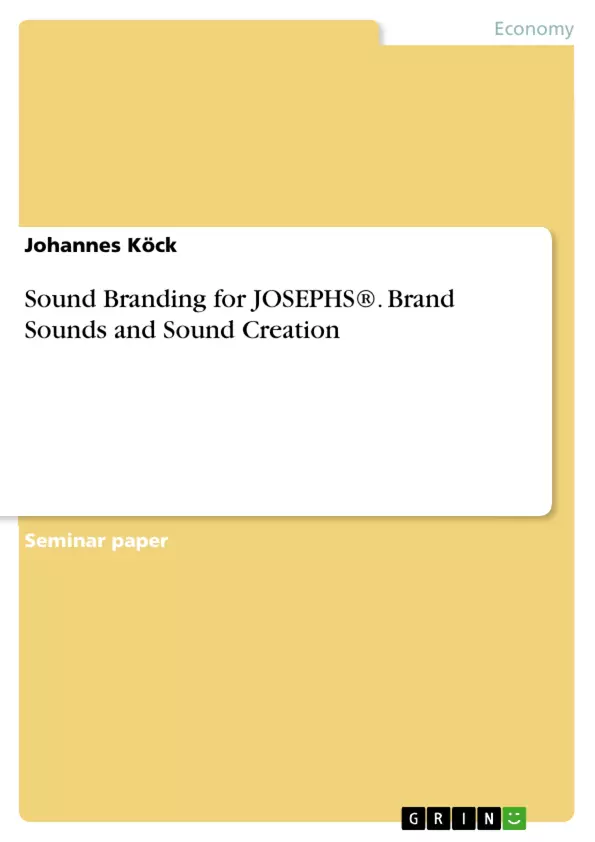Environments for innovation are developing and changing faster than ever. In a globalized world of business, the right form of communication for the respective innovation might attract the interest of management.
Generally, communication of innovation is about “commercializing innovations successfully”. This especially takes place in ‘customer’s heads’ when customers come to recognize an innovation as a real innovation and it is far more than just presenting a new product or service. It seems to be important to strategically plan communication inside and outside of the company’s boundary.
The goal of this paper is to strategically define the message which is supposed to be delivered by the sound (sound for JOSEPHS® Nuremberg) and to determine the respective criteria for the sound being created. After theoretical definitions and this strategically preparatory work, there will be notes about the sound creation phase and a short conclusion.
Inhaltsverzeichnis (Table of Contents)
- What is JOSEPHS®?
- What is Sound Branding?
- Who are the target audience?
- Brand Sounds
- Types of Brand Sounds
- Examples of Sound Logos
- Survey
- Morphological Box
- Sound Creation
- Conclusion
Zielsetzung und Themenschwerpunkte (Objectives and Key Themes)
This paper explores the concept of sound branding within the context of JOSEPHS® Nuremberg, aiming to strategically define the message conveyed by the sound and establish criteria for its creation. The paper begins with theoretical definitions of sound branding and target audience analysis, followed by a discussion on brand sounds, survey results, and the development of a morphological box. The paper concludes with an overview of the sound creation process.
- Sound Branding as a strategic communication tool for innovation.
- Identifying the target audience for the sound branding project.
- Defining the key message and desired impact of the sound.
- Analyzing existing sound branding examples and developing a sound creation process.
- Utilizing a morphological box for exploring sound attribute possibilities.
Zusammenfassung der Kapitel (Chapter Summaries)
The first chapter provides an introduction to JOSEPHS® and its context. The second chapter defines sound branding and its role in corporate identity. Chapter 3 identifies the target audience for the sound branding project. Chapters 4.1 and 4.2 explore the different types of brand sounds and provide examples of successful sound logos. Chapter 5 summarizes the survey conducted to gather insights into sound preferences. Chapter 6 introduces the morphological box as a tool for exploring sound attributes. Chapter 7 outlines the sound creation process. The conclusion summarizes the key findings and insights.
Schlüsselwörter (Keywords)
Sound Branding, Corporate Identity, Innovation Communication, Target Audience, Brand Sounds, Sound Logos, Survey, Morphological Box, Sound Creation.
- Citar trabajo
- Johannes Köck (Autor), 2014, Sound Branding for JOSEPHS®. Brand Sounds and Sound Creation, Múnich, GRIN Verlag, https://www.grin.com/document/378118



